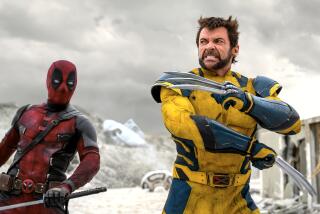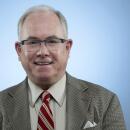Disney’s Rising Star Pursues New Kingdoms
Judson Green, new Walt Disney Co. theme park chief and sometime jazz pianist, has always shown a knack for improvisation.
He fought to expand Disney’s theme parks during recessions, when Disneyland Paris was hemorrhaging money in its early days and when pundits predicted that California earthquakes, riots and Florida crime sprees would scare tourists away from Disney’s theme parks.
Green’s instincts paid off. Operating profit for Disney’s parks and resorts rose 13% to $1.3 billion in the fiscal year ended Sept. 30, with revenue climbing 10% to $5.5 billion. All that despite an economic downturn in Asia that continues to hurt U.S. tourism.
Now, as Disney eyes new foreign ventures in China, the unassuming Midwesterner is leading the way in the same low-key style that has charmed participants in many a piano sing-along over the years.
Even before his promotion from president to chairman of Walt Disney Attractions this month, Green, 46, had been viewed as a rising star in the company. He’s even made analyst lists as one of several candidates who could potentially succeed Disney Chairman Michael Eisner someday, although such discussions seem academic. Until 2006, Eisner is locked into one of the richest contracts in corporate America.
While impressed with Green’s success, friends say they never expected him to remain an accountant, the profession he chose when he finished college.
“He was wildly popular when we were growing up,” says writer James (“Den of Thieves”) Stewart, who attended high school and DePauw University with Green in the late 1960s and early 1970s. Green played French horn in a high school wind quintet in Quincy, Ill., that featured Stewart on bassoon.
“He was the kind of guy who instinctively could keep one foot in the button-down-collar crowd and one in the hair-down-to-the-waist, complete rock ‘n’ roll musician crowd and be accepted by both,” Stewart recalls.
Eisner was so impressed by Green’s ease at moving from number-crunching to jazz riffs that he mentioned it in his recent autobiography.
“While he had a classic business and finance background and a genuine enthusiasm for operations, I liked the fact that he was also an accomplished jazz pianist,” Eisner wrote.
Heeding urgings from his parents and other elders, Green decided against a music career, winding up getting his MBA from the University of Chicago. “Quincy is a pretty conservative place,” Stewart says. “Not the kind of place people would think you could become a musician--or a writer.”
But Green kept playing music, mostly jazz piano, at weekend gigs in college, backing the likes of Bobby Vinton and Pat Boone. At first it supplemented his accountant’s income early in his marriage; later, he did it for fun.
Green’s knack for bridging the financial and creative worlds has helped lift him in 17 years from auditing Walt Disney World books to the crest of the parks and resorts business, overseeing Disneyland, Walt Disney World in Florida and Disney’s theme parks in Japan and near Paris.
As chairman of Disney’s parks’ segment, Green replaces the retiring Richard Nunis, 66, who started as an hourly worker at Disneyland the year it opened in 1955. Disneyland President Paul Pressler, 42, will replace Green as head of attractions, which involves running the theme park operations day to day.
In the coming year, Green faces what he sees as a short-term problem: declining attendance at major theme parks. But Green is optimistic. Long-term, incomes and free time will continue to rise, he says, and he expresses confidence that the Disney name will continue to be a strong draw globally.
In previous roles, Green spent two years as Disney’s chief financial officer and two as CFO of Disneyland Paris. In 1991, when Eisner named him attractions president, he began running the parks while Nunis focused on public relations for Disney’s immense Florida site.
In his book, Eisner praised Green for recognizing that employee performance and morale were slipping at the parks and for reinvigorating Disney “cast members” at them.
Green is not without critics, who say he and Eisner have overemphasized cost cuts and price hikes at the parks.
Marketing consultant Daniel L. Head, a former Disneyland employee, contends “pencil pushers” motivated by “the eternal mandates and goals [of] Judson and Michael” have taken over in Anaheim--”an obvious reward for obtaining financial success and not guest satisfaction.”
Union leaders say that after years of wage and benefit cuts, Disney was sympathetic to workers in Disneyland contract talks this year. But Walt Disney World negotiations became vitriolic as the company insisted that employees pay more for health insurance. And a pending lawsuit contends Disney broke promises of free medical insurance for some retired park workers.
Green says Disney always will pay at the top end of the generally low-wage tourism industry. Rising health-care costs and national changes in attitudes toward corporate benefits “have been a shock for us all,” he adds.
He bristles at accusations that maintenance has suffered at Disneyland, where sections like Frontierland are showing their age at 43. “It’s not a question of money in that regard,” he says. “When we see something that needs addressing, we address it. There’s nothing we can’t fix.”
While Green seems very much a company man--his Florida home is filled with disguised images of Mickey Mouse, and three Dalmatians greet visitors at the door--he joined the company almost by accident.
Indeed, had it not been 10 below zero in what passes for early spring in Chicago--and had his wife, Joyce, not been from Orlando--he never would have traded his accounting job for a position at Walt Disney World going over the books.
Green says he was happy at the former Arthur Young & Co. in Chicago--McDonald’s was the big account--when a recruiter called in 1981 to pitch a job in the Southeast.
“She said, ‘I can’t tell you who it is, but it’s the company that makes happiness,’ ” Green recalls. To him and his wife, who had been talking about moving back to Florida, the code was easy to crack.
“I wasn’t eager to go to the internal audit department, but I was intrigued with the company,” Green says. “It was kind of a risky thing.”
In the next six years at Disney World, he rose from audit manager to controller to vice president of planning and finance. Then in 1987, Eisner plucked him to be the chief financial officer for Disneyland Paris as it was being built, putting his career into high gear.
If Green expresses pride, it is that he and other theme park advocates prevailed over voices within Disney who argued in the early 1990s that the business, especially domestically, was no longer worth spending large sums on.
Instead, Eisner was persuaded to pursue four major endeavors--second theme parks in Anaheim and Tokyo, a fourth in Florida and a Bahamas cruise line attached to Walt Disney World.
Now that Disney has opened the new Animal Kingdom park and cruise line in Florida, and construction is underway on second parks in California and Japan, Green’s attention largely will turn to new foreign ventures.
At the top of the list is China, where stories of possible Disney ventures in Hong Kong or Shanghai have percolated in the press and construction circles recently. It’s a delicate task, given the Chinese government’s open displeasure with Disney’s 1997 release of “Kundun,” Martin Scorsese’s critical film examining China’s annexation of Tibet. A recent Eisner visit with Chinese officials appears to have ironed out those differences.
Green’s latest assignment seems significant to analysts like Schroder & Co.’s David Londoner, who notes, “Foreign expansion is going to be the most rapid growth in the company” in coming decades.
“If they can come anywhere close to what they’ve done in the United States in the last 15 years, you’ve got to be pretty impressed,” Londoner says.
(BEGIN TEXT OF INFOBOX / INFOGRAPHIC)
Disney’s World
* Theme park and resort operations: Seven parks (two more under construction), numerous hotels, cruise line.
* Revenue for fiscal year ended Sept. 30: $5.5 billion, up 10%.
* Operating profit: $1.3 billion, up 13%.
Top Disney Parks, by 1998 Attendance
Tokyo Disneyland, Japan: 16.7 million
Magic Kingdom, Florida: 15.6 million
Disneyland, Anaheim: 13.7 million
Disneyland, Paris, France: 12.5 million
Epoct Center, Florida: 10.6 million
Disney-MGM Studios, Florida: 9.5 million
Disney’s Animal Kingdom, Florida: 6 million
Source: Walt Disney Co., Amusement Business magazine
Profile: Judson Green
Age: 46
Position: Chairman, Walt Disney Attractions
Background: Left Arthur Young accounting firm in Chicago to become internal auditor for Walt Disney World in 1981. Rose to vice president of finance and planning. Named chief financiaL officer of Disneyland Paris in 1987, CFO of Walt Disney Co. in 1989, president of Walt Disney Attractions in 1991.
Education: DePauw University Greencastle, Ind., economics major, music composition minor; MBA from University of Chicago Graduate School of Business.
Hobbies: Piano, skiing.
More to Read
The biggest entertainment stories
Get our big stories about Hollywood, film, television, music, arts, culture and more right in your inbox as soon as they publish.
You may occasionally receive promotional content from the Los Angeles Times.











